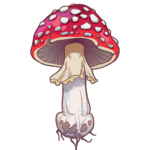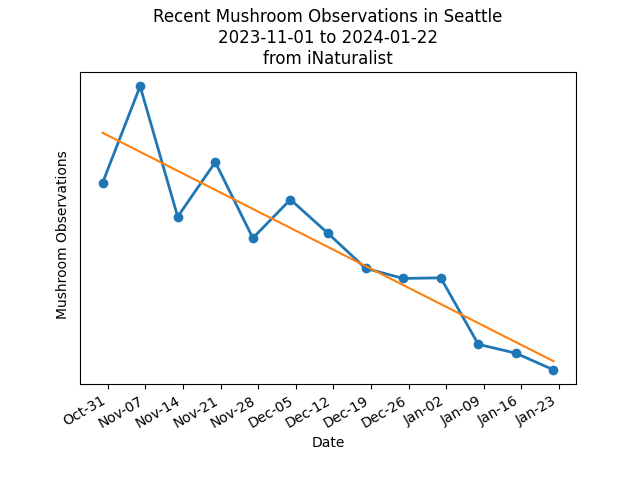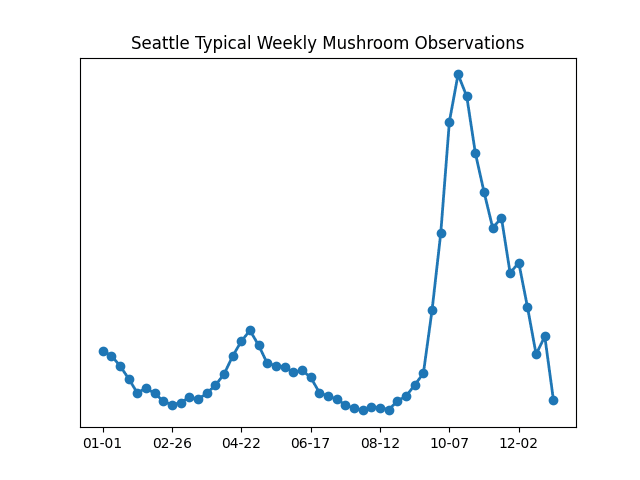How are the current conditions for mushrooms in the Seattle area right now? After a recent cold snap, the region has returned to more typical temperature ranges with highs in the 50s and lows above freezing. Some might think that these conditions would be quite favorable for mushrooms.
Here is a chart that summarizes typical mushroom observations in the Seattle area throughout the year. You can see that late January into March is actually one of the slowest times for mushrooms in our region. Why is that?
Weather and Mushroom Growth
One of the key factors that influence mushroom conditions in Seattle is the weather. The region’s cool and damp climate provides an ideal environment for mushroom growth. The frequent rainfall and moderate temperatures create the perfect conditions for mushrooms to thrive.
Here is are a couple of charts that help to summarize annual temperature and rainfall averages. Temperature and Precipitation are almost perfectly inverse to each other. Precipitation is highest during the cool months from November to March, and lowest in Jun-Aug.
[weather name=”Seattle”]
Mushroom Observations in Seattle
Using data from iNaturalist we can review annual trends of mushroom observations in the Seattle area. It might be surprising to see the abrupt spike in October. This is when the weather is cooler and the autumn rains have returned. There is also a distinct bump in the springtime when temperatures are warming and there is still plenty of moisture in the air and soil.
Recent Conditions
Annual trends can give us a good idea of when mushrooms might be fruiting, recent weather conditions can also provide meaningful data for us too. Here are a couple of charts showing temperature and precipitation over the past couple of months.


Typically January is part of an extended tail to the fall season but once temperatures drop below freezing for an extended period, it will take some time for the fleshy mushrooms to start showing up again.


